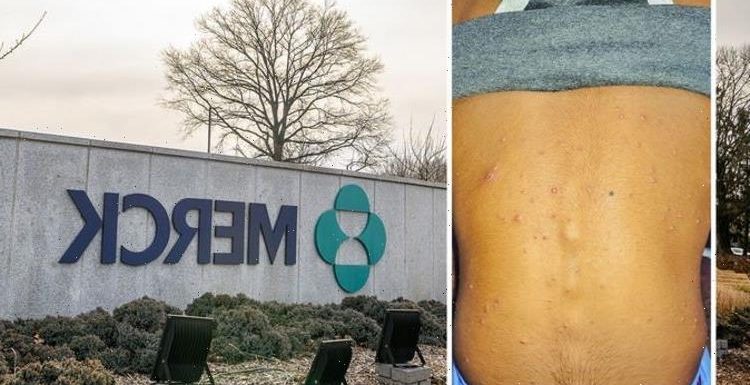
NHS England preparing annual Covid booster jab programme
We use your sign-up to provide content in ways you’ve consented to and to improve our understanding of you. This may include adverts from us and 3rd parties based on our understanding. You can unsubscribe at any time. More info
The “questionable vials” were discovered at a Merck facility by a lab worker clearing out a freezer earlier this week. The FBI and US Centers for Disease Control and Prevention (CDC) have investigated the incident, sparking fears of a smallpox outbreak at the facility. Smallpox is a highly contagious disease caused by one of two viruses – Variola major and Variola minor.
The disease is estimated to have killed more than 300 million people since the 20th century began.
After being put on temporary lockdown, the Merck facility has resumed work.
According to the CDC, the lab worker who found the vials was wearing a face mask and gloves at the time.
A CDC spokesperson said: “There is no indication that anyone has been exposed to the small number of frozen vials.


“We will provide further details as they are available.”
The contents of the vials were also described as appearing “intact”.
The discovery is worrying because there are only two places in the world where smallpox samples are allowed to be stored – in Russia in Atlanta, US.
Two years ago, the Russian facility near Novosibirsk in Siberia, known as the State Research Center of Virology and Biotechnology, suffered an explosion.
The site houses many terrifying pathogens, such as Ebola, anthrax and the Marburg virus.
Controlling Covid is a 'multi-layered operation' says Dr Pankhania
According to the laboratory, the explosion was caused by a gas cylinder blowing up.
In a statement, the lab assured: “No work with biological material on the body was carried out.”
The World Health Organization (WHO) estimated Smallpox disease has existed for at least 3,000 years.
British physician Edward Jenner was the first to develop a successful vaccine in 1796.
The WHO said: “The World Health Organization launched an intensified plan to eradicate smallpox in 1967.


“Widespread immunization and surveillance were conducted around the world for several years.
“The last known natural case was in Somalia in 1977.”
In 1980, the WHO declared smallpox eradicated in what has been called “the most notable and profound public health successes in history”.
Smallpox is highly contagious, lethal and there is no known cure for the disease.
However, a vaccine can effectively prevent infection.
Symptoms typically appear within 10 to 14 days of infection and include fever, headache, back pain, vomiting and discomfort.
As the disease progresses, red spots appear on the face, hands and forearms.
In a matter of days, the spots turn to blisters filled with clear liquid and then pus.
Source: Read Full Article